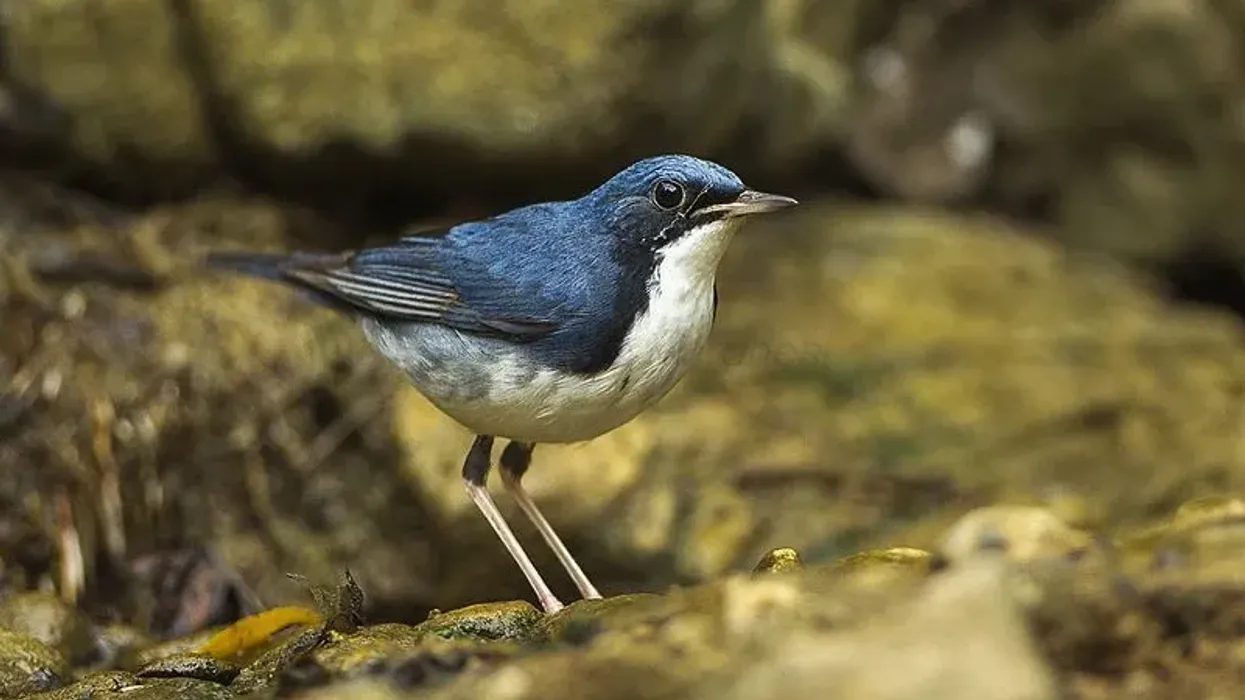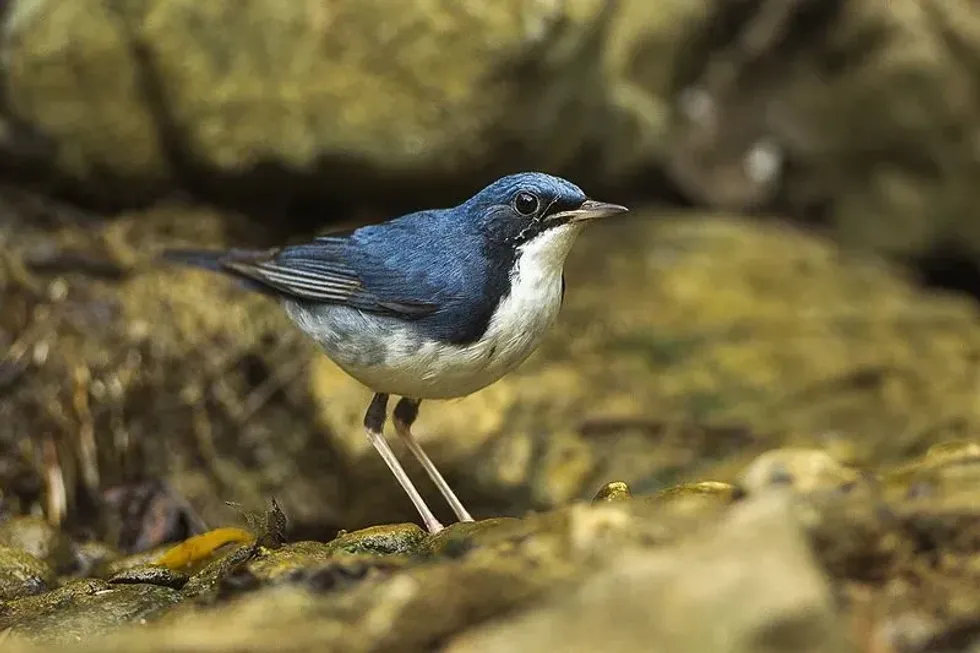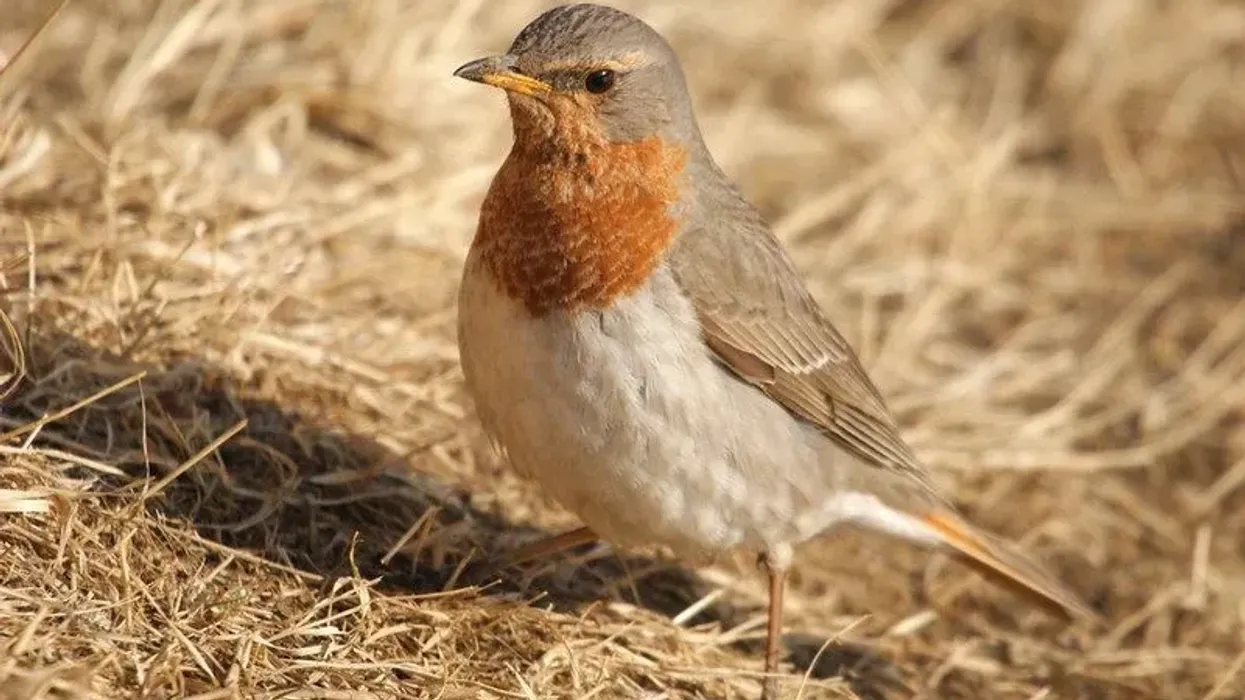The Siberian blue robin is a small member of the robin family. Though its name indicates East Asian origins, it is also found in North America.
These small birds stand out because of their various shades of blue, light, dark, and everything in between. These small thrushes are known for their multi-colored blue bodies, but also because they are quickly heading towards endangerment.
Loss of habitat is one of its biggest threats, with the species losing great amounts of land to human intervention every year. Depending on where they live, their breeding cycles change from one month to another, and in one breeding cycle, they have around six to nine eggs.
The Siberian blue robin is not the only fun bird you can read all about! There are hundreds of other birds in the world for you to know about and enjoy, such as the pink robin and west Indian manatee. They both belong to the robin family, much like the Siberian blue. Read all about them and many more!
Siberian Blue Robin Interesting Facts
What type of animal is a Siberian blue robin?
The Siberian blue robin (Larvivora cyane) is a type of bird. It is now commonly classed as a member of the Muscicapidae Old World flycatcher family.
What class of animal does a Siberian blue robin belong to?
The Siberian blue robin (Larvivora cyane) belongs to the Aves class of birds.
How many Siberian blue robins are there in the world?
The Siberian blue robin bird (Luscinia cyane), an Old World flycatcher, is prevalent across its range, though habitat degradation and fragmentation are harming this species. Although the population appears to be falling, the species is not considered endangered globally for now. The exact population of the Siberian blue robin bird (Luscinia cyane) is not known.
Where does a Siberian blue robin live?
The Siberian blue robin (Larvivora cyane) lives in the woods. This bird is a transient insectivorous species breeding in the eastern Palearctic region from Siberia, including northern Mongolia, Korea, north east China, and Japan. This bird spends the winter in south eastern and southern Asia, as well as Indonesia.
What is a Siberian blue robin's habitat?
The preferred breeding habitat range of a Siberian blue robin (Larvivora cyane) includes coniferous forest with extensive undergrowth, frequently beside streams or at woodland borders. It is a 'skulking' creature that eats on the ground. This bird likewise prefers to reside in deep foliage during the winter.
Who do Siberian blue robins live with?
This is a secretive bird that only appears at the night time of the day. During the breeding season, the Siberian blue robin (Larvivora cyane) can be observed in pairs, but outside of that time, this bird is normally solitary.
It is territorial, singing loudly to declare and maintain its territory. It has been recognized as a vagrant or transient bird of North America.
How long does a Siberian blue robin live?
Luscinia cyane robins start reproducing when they are around a year old and survive for two years on average. However, one wild robin lived for 14 years. The rufous-backed robin has a two to three year lifetime.
How do they reproduce?
In Russia, the breeding season is in June to July, while in China and Japan, it is in May to July. In Japan, breeding takes place in either coniferous or temperate forests.
The Siberian blue robin (Larvivora cyane) nest is a bowl-shaped depression lined with animal hair formed of grasses, leaves, and mosses. It is frequently hidden by thick foliage and positioned on or near the surface, on a riverbank among tree roots, or covered by fallen branches.
The Siberian blue robin female produces two to six vivid blue and greenish-blue eggs that hatch after around 12 days. Both female and male birds contribute to the feeding and raising of the young.
What is their conservation status?
The conservation status of Siberian blue robin birds (Luscinia cyane) of Siberia, ranked in a new genus, is classified as Least Concern by IUCN Red List, as it is not internationally threatened. However, habitat loss is driving the numbers of these birds down.
Siberian Blue Robin Fun Facts
What do Siberian blue robins look like?
The mature male Luscinia cyane has a deep blue or slaty blue head, crown, ear-coverts, neck sides, upper parts, and upper wings. All tertials and outer webs of the flight feathers are vivid blues.
The mature female looks similar to the rufous-tailed robin, but she has a grayer upper body. The wings, back, and tail are all a bluish-brown color. The scaling design is lighter and buffier on the undersides, and the flanks are light brown.
How cute are they?
These birds of the genus Larvivora and rare visitors to North America appear very cute and brightly colored.
How do they communicate?
A quiet, harsh call is typical of the Siberian blue robin (Larvivora cyane). The alarm cry is a short 'tack' that they give solo or in a two-note 'tak-tak' pattern.
The song is a quick, loud trill with pauses in between. Fine, spaced sit notes are frequently used to open this pretty intense song. It's known as 'tri-tri' and is only heard during the breeding season.
How big is a Siberian blue robin?
The average length range of the Luscinia cyanespecies is around5.3-5.7 in (13.4-14.4 cm). The least flycatcher length range measures between 4.7-5.5 in (12-14 cm). Luscinia cyane birds are slightly bigger than the least flycatcher species.
How fast can a Siberian blue robin fly?
With quick wingbeats, the flight of the Luscinia cyane bird is quick and direct. Robins have been observed flying at speeds ranging from 20-36 mph (32-58 kph).
How much does a Siberian blue robin weigh?
The average body weight of Luscinia cyane birds that winter in south eastern Asia are approximately 0.53 oz (15 g).
What are the male and female names of the species?
Male and female Siberian blue robin birds do not have any unique names.
What would you call a baby Siberian blue robin?
Baby birds of the Luscinia cyane species have no particular name. They are rare vagrants of North America.
What do they eat?
Bugs, ants, and beetles are the main food sources for the Siberian blue robin (scientific name Larvivora cyane). During the summer in China, the Luscinia cyane bird eats fruits and grass seeds. In addition, this bird also eats small clams, bug larva, and spiders.
Are they dangerous?
These birds that breed in northern Mongolia and Siberia with a Least Concern conservation status are not dangerous.
Would they make a good pet?
Robin birds are easy-going birds that don't require a lot of attention, grooming, or space. Combined with a robin's varied diet, these characteristics make them suitable candidates for maintaining as pets. American robins, on the other hand, do not make great pets.
Did you know...
Male Hawaiian honeycreeper birds are brighter in color than their female species.
What is the history of the Siberian blue robin?
The Siberian blue robin (Larvivora cyane) is a little passerine bird that was once classified as a species of the Turdidae family of thrushes but is now more commonly classified as a part of the Muscicapidae family of Old World flycatchers. Chats are a common name for it and other similar little European robin species.
According to a new study, this species, along with certain other East Asian species of the Luscinia genus, should be placed in a new genus with the Japanese and Ryky robins. Larvivora is derived from the new Latin word 'larva', meaning 'caterpillar', and '-vorus', which means 'eating', and 'cyane', which means 'dark blue'.
What colors are robin birds?
The Indian blue robin (Larvivora brunnea) is a tiny bird that lives in India. It was once thought to be a thrush, but it is now classified as an Old World flycatcher in the Muscicapidae family. It was previously known as the Indian blue chat.
The black robin, also known as the Chatham Island robin (Petroica traversi), is a threatened bird native to the Chatham Islands off New Zealand's east coast. It is closely connected to the robin of the South Island (P. australis).
Here at Kidadl, we have carefully created lots of interesting family-friendly animal facts for everyone to discover! For more relatable content, check out these least flycatcher facts and Hawaiian honeycreeper facts for kids.
You can even occupy yourself at home by coloring in one of our free printable siberian blue robin coloring pages.










